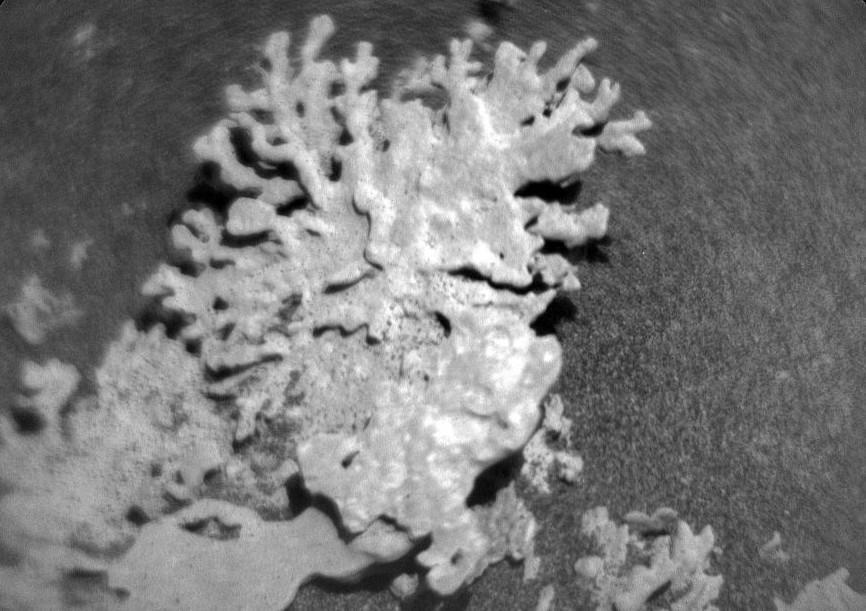
Coral-shaped rock spotted on Mars, NASA shares pic
NASA’s Curiosity Mars rover has made another groundbreaking discovery on the Martian surface, sending back black and white images of a rock that bears a striking resemblance to a piece of coral. The fascinating find was made in the Gale Crater, a large impact basin on Mars, and is estimated to be around a billion years old.
The images were captured using the rover’s Chemistry and Camera (ChemCam) instrument, which is designed to analyze the chemical composition of Martian rocks and soil. The instrument uses a laser to vaporize a small portion of the rock, and then analyzes the resulting plasma to determine the chemical makeup of the sample.
The coral-shaped rock is a remarkable find, not only because of its unique shape, but also because of its potential implications for understanding the geological history of Mars. The Gale Crater is a key area of interest for NASA scientists, as it is believed to have been formed around 3.5 billion years ago, during a period of intense asteroid and comet impacts on the planet.
The discovery of the coral-shaped rock suggests that the area has undergone significant changes over the past billion years, and may have once been a more habitable environment. The rock itself is thought to be a type of sedimentary rock, formed from the accumulation of minerals and other materials over time.
“This rock is a great example of the diversity of geological features we’re seeing on Mars,” said Dr. Ashwin Vasavada, the Curiosity mission’s project scientist. “We’re excited to learn more about its composition and how it fits into the broader geological story of Mars.”
The Curiosity rover has been exploring the Martian surface since 2012, and has made several significant discoveries in the process. In 2015, the rover discovered evidence of ancient lakes and rivers on Mars, which suggested that the planet may have once been capable of supporting life.
The rover has also found evidence of methane in the Martian atmosphere, which is a potent greenhouse gas that is often produced by living organisms. While the source of the methane is still unknown, it has sparked renewed interest in the possibility of life on Mars.
The discovery of the coral-shaped rock is just the latest in a long line of exciting findings from the Curiosity rover. As NASA continues to explore the Martian surface, it’s clear that the planet still holds many secrets waiting to be uncovered.
Source:
https://www.jpl.nasa.gov/images/pia26634-curiositys-chemcam-views-a-rock-shaped-like-coral/
Note: The above blog post is based on the provided news article and is intended to provide a summary of the discovery for a general audience. The post includes a brief description of the discovery, its significance, and potential implications for understanding the geological history of Mars.






